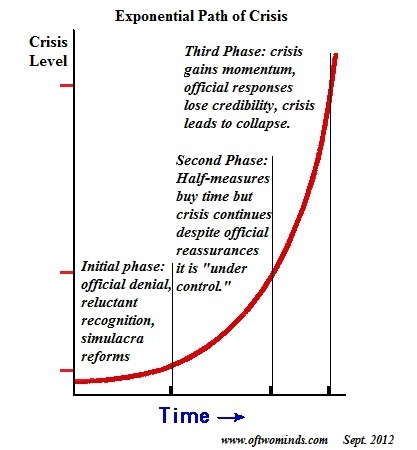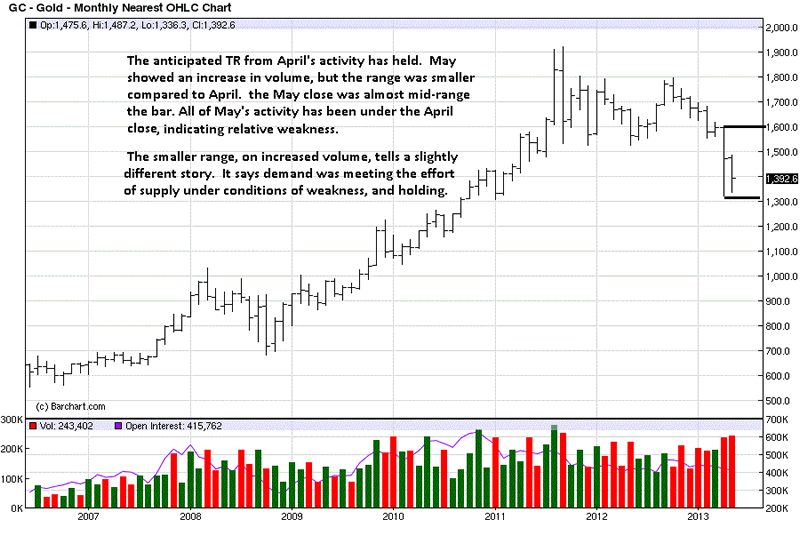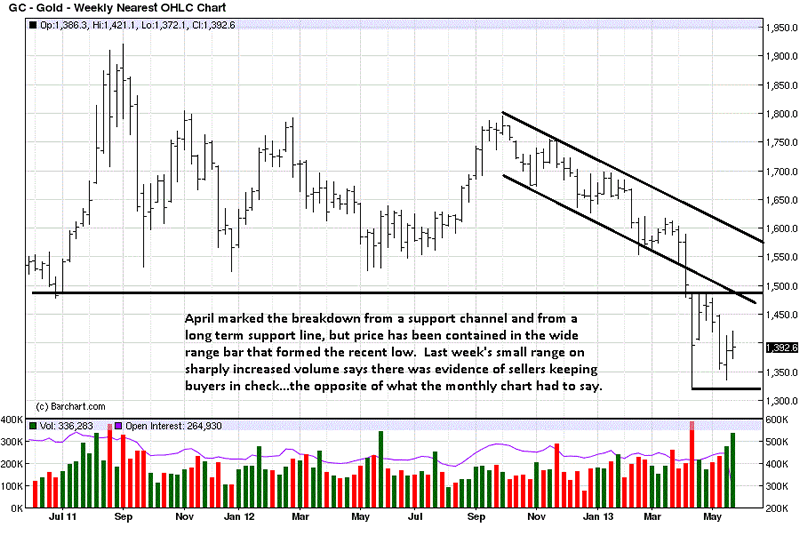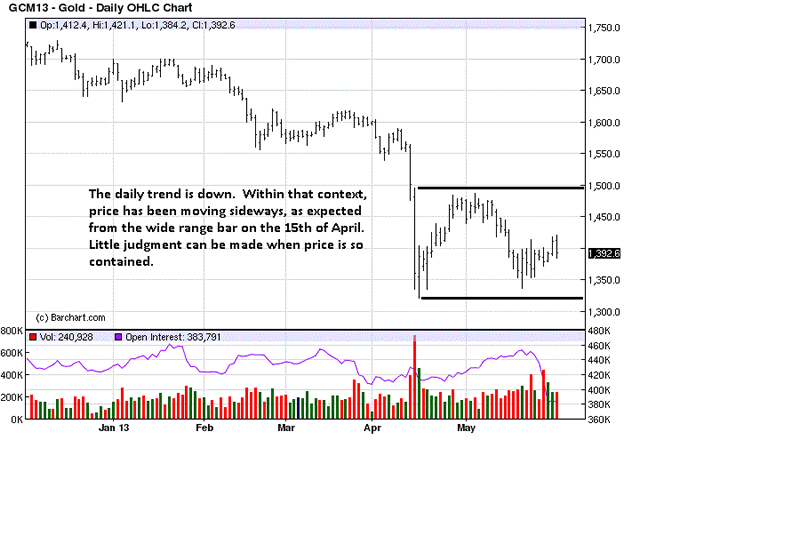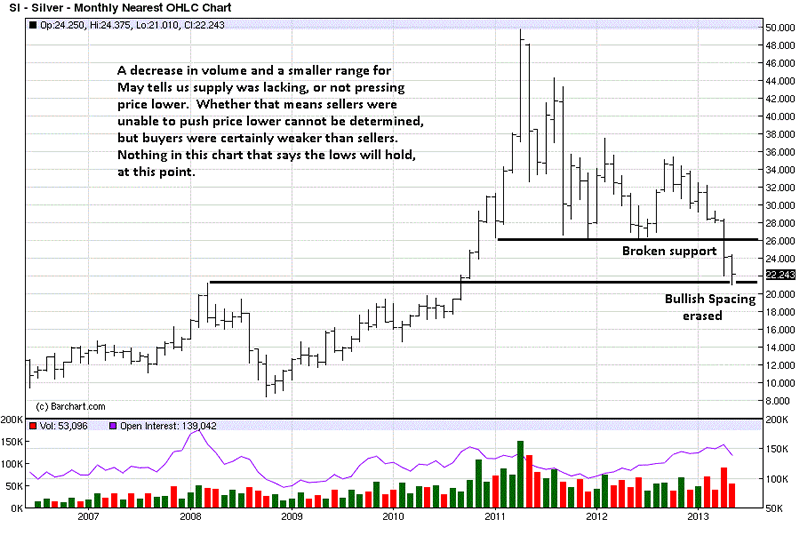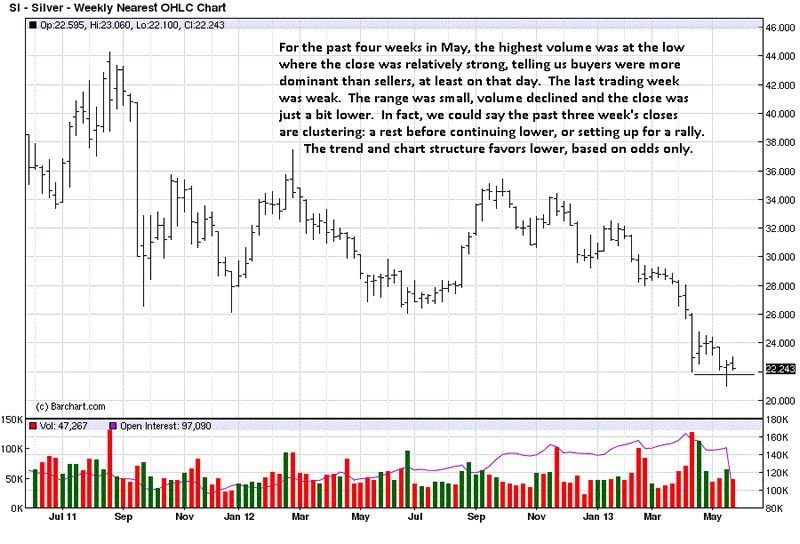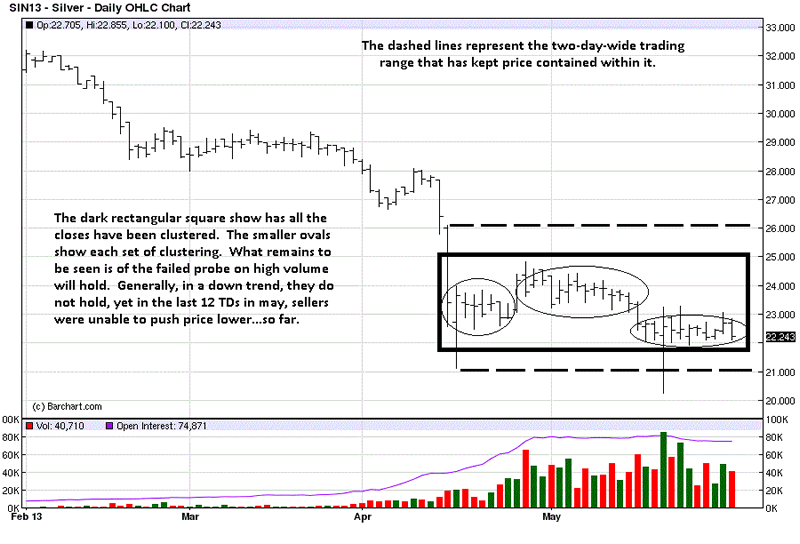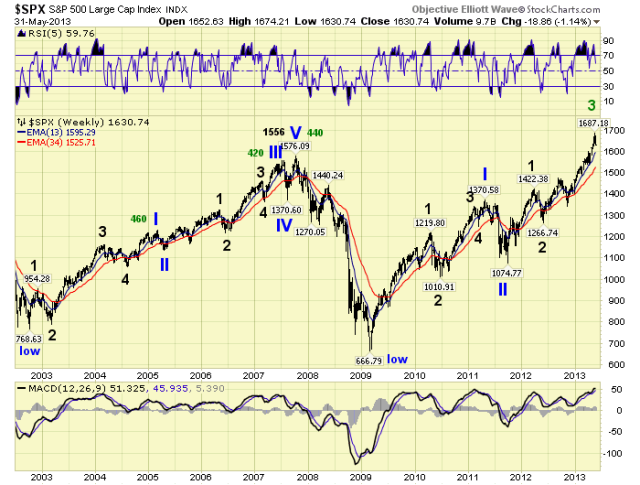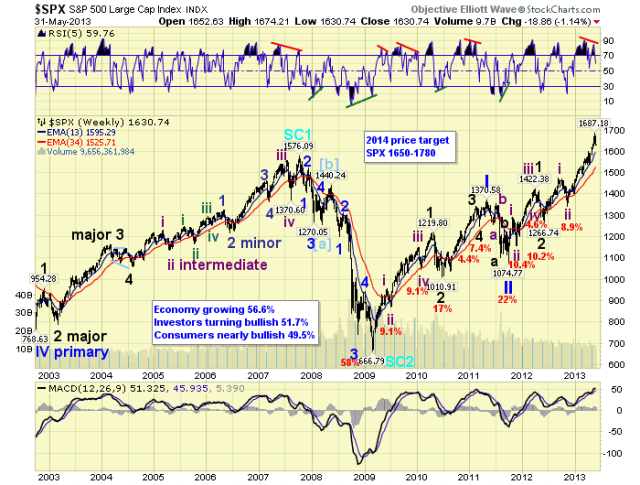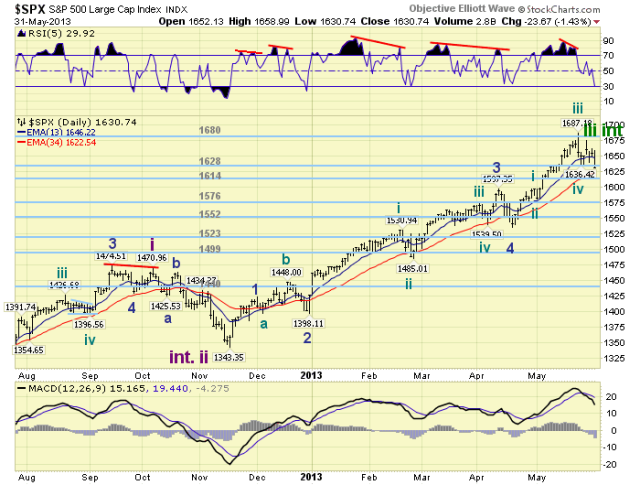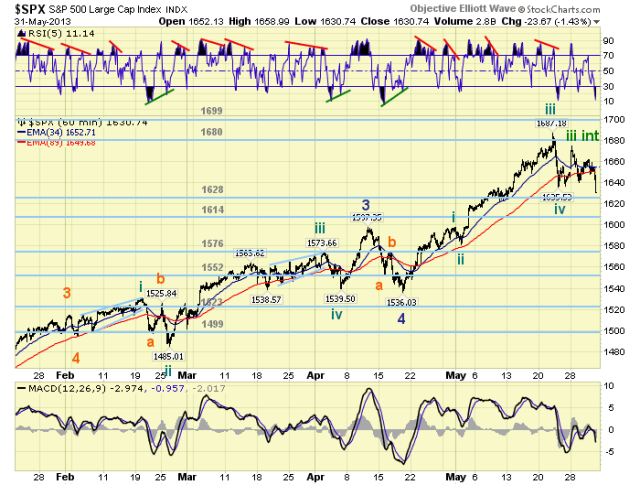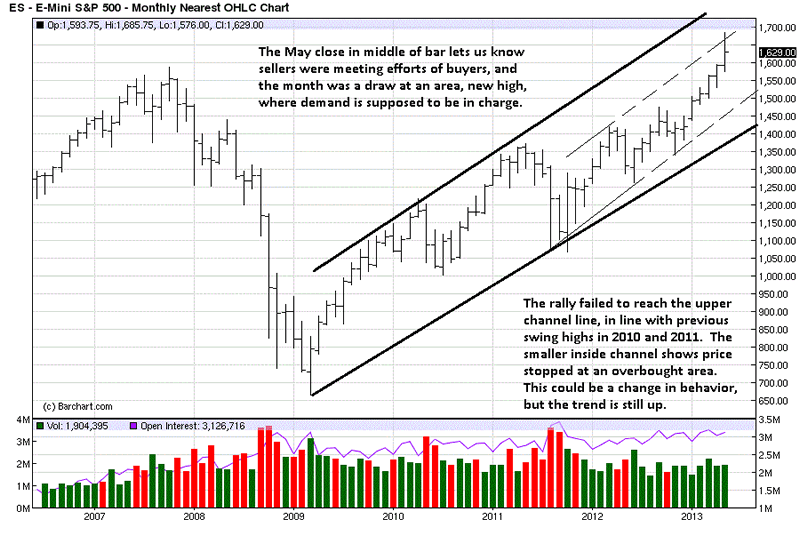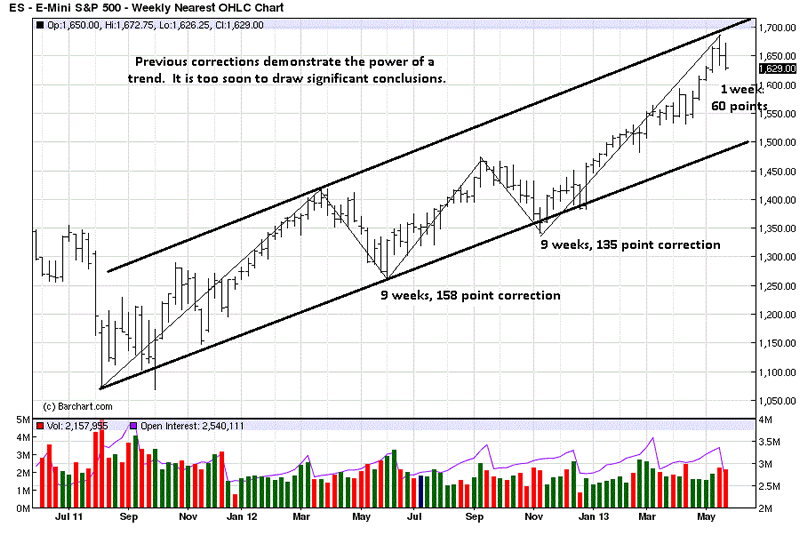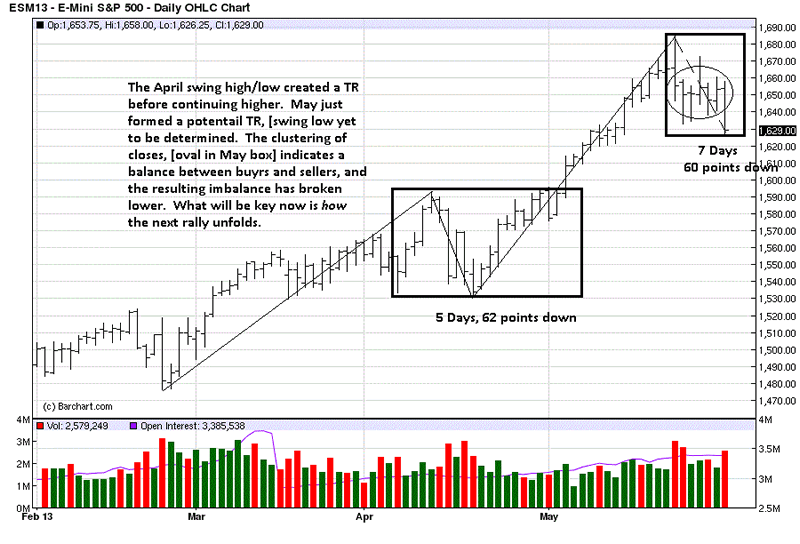by Jeff Miller
Since 2008 investors have preferred bonds to stocks. When the valuation difference became compelling, the stock rebound was led by defensive sectors – anything with attractive yield. We are now at a crucial point in this trend. Last week's spike in long-term interest rates has driven the ten-year yield back above the dividend yield on the S&P 500 for the first time since 2011. Abnormal Returns discusses the rarity of this situation, noting,
"This relative yield argument has been used by many to get investors to jump back into stocks."
See the full post for a more complete discussion and an interesting chart.

Follow up:
With plenty of data to fuel the debate, this week's focus will be on interest rates: Will the surge continue?
The one-year chart of the ten-year yield shows the break out from the recent trading range. You need to look carefully to see the last few daily data points, following a gap.

To set the stage, here are two contrasting viewpoints:
- Top bond managers Jeff Gundlach and Bill Gross see long-term rates as controlled by the Fed. At the start of May Gundlach stated this viewpoint on several occasions as noted in the WSJ:
"It's not timely to be betting on higher interest rates," said Jeffrey Gundlach, chief executive and chief investment officer of DoubleLine, a Los Angeles firm with $59 billion under management. He said economic growth remains too soft to allow the Fed to consider cutting back its $85 billion-a-month bond-purchase program known as "quantitative easing," a shift he views as a necessary precursor to any increase in interest rates.
Gross shared this opinion:
"Pimco's advice is to continue to participate in an obviously central-bank-generated bubble,'' Mr. Gross said in his monthly investment outlook published last week.
- Economist Scott Grannis contends that the Fed is Powerless to Manipulate Interest Rates.
If the Fed bought three quarters of the new issuance of Treasury securities over an 8-month period, with a focus on longer maturities, the 10-yr Treasury yield would almost certainly fall, right? And if the Fed bought all the new issuance of MBS over an 8-month period, increasing its share of home mortgages by over 40% in the process, yields on MBS would almost certainly fall, right?
Wrong. The Fed has indeed been a huge buyer of Treasuries and MBS since last September, but Treasury yields and MBS yields have moved significantly higher, not lower.
Grannis shows the effect on the MBS market. Despite Fed purchases equal to the net new issuance, the rates of increased by 100 bps.

Despite losses in May, Gundlach is sticking to his guns, expecting the Fed to step in.
How will the interest rate story play out? As usual, I have some thoughts on the bull market question which I'll report in the conclusion. First, let us do our regular update of last week's news and data.
Background on "Weighing the Week Ahead"
There are many good lists of upcoming events. One source I regularly follow is the weekly calendar from Investing.com. For best results you need to select the date range from the calendar displayed on the site. You will be rewarded with a comprehensive list of data and events from all over the world. It takes a little practice, but it is worth it.
In contrast, I highlight a smaller group of events. My theme is an expert guess about what we will be watching on TV and reading in the mainstream media. It is a focus on what I think is important for my trading and client portfolios.
This is unlike my other articles at "A Dash" where I develop a focused, logical argument with supporting data on a single theme. Here I am simply sharing my conclusions. Sometimes these are topics that I have already written about, and others are on my agenda. I am putting the news in context.
Readers often disagree with my conclusions. Do not be bashful. Join in and comment about what we should expect in the days ahead. This weekly piece emphasizes my opinions about what is really important and how to put the news in context. I have had great success with my approach, but feel free to disagree. That is what makes a market!
Last Week's Data
Each week I break down events into good and bad. Often there is "ugly" and on rare occasion something really good. My working definition of "good" has two components:
- The news is market-friendly. Our personal policy preferences are not relevant for this test. And especially -- no politics.
- It is better than expectations.
The Good
This was a mixed and abbreviated week for economic data.
- The Chicago PMI showed a surprising gain to 58.7, the biggest increase in decades. This matters mostly as a hint about Monday's national PMI.
- Case-Shiller home prices showed a surprising increase. See Calculated Risk for analysis. Dr. Ed, providing this chart, makes the prediction that there will be "no negative equity in U.S. markets in 12-18 months."

- Michigan Sentiment hit a new high. This is a good coincident indicator of consumer activity and employment. I love the Doug Short chart, which combines all of the key factors.

The Bad
There was some negative data this week, but it was not as bad as the headlines. The market reaction did not seem closely tied to the data. Feel free to join in the comments with any items that you think I missed.
- Initial jobless claims disappointed, increasing to 354K. This is replacing a "good" week in the 4-week average that everyone follows to reduce noise.
- Personal income was unchanged, a market disappointment. See Steven Hansen's analysis for trends, inflation adjustments, and year-over-year analysis. Eddy Elfenbein is more encouraged by the result when adjusting for transfer payments. Eddy recommends ignoring the end-of-year "dividend spike" in this chart:

- Pending home sales increased, but less than expected. I am scoring this as "bad" but Calculated Risk sees it as a function of fewer low-end foreclosures.
The Ugly
Friday's closing stock market captures this week's "ugly" award. The final hour collapse took the averages into negative territory for the week. There was some talk about a possible bad number in the HSBC Manufacturing PMI for China. This would come out before Monday's opening.
Companies do not execute stock repurchases in the last hour of trading and there is no "window dressing" by long-only managers on the last day of the month. Apparently the Plunge Protection Team had also left for the weekend!
I predicted last week that we would see extraordinary volatility, and suggested that we all needed a game plan. I used mine Friday afternoon to do some buying.
The Indicator Snapshot
It is important to keep the current news in perspective. My weekly snapshot includes the most important summary indicators:
The SLFSI reports with a one-week lag. This means that the reported values do not include last week's market action. The SLFSI has moved a lot lower, and is now out of the trigger range of my pre-determined risk alarm. This is an excellent tool for managing risk objectively, and it has suggested the need for more caution. Before implementing this indicator our team did extensive research, discovering a "warning range" that deserves respect. We identified a reading of 1.1 or higher as a place to consider reducing positions.
The SLFSI is not a market-timing tool, since it does not attempt to predict how people will interpret events. It uses data, mostly from credit markets, to reach an objective risk assessment. The biggest profits come from going all-in when risk is high on this indicator, but so do the biggest losses.
The C-Score is a weekly interpretation of the best recession indicator I found, Bob Dieli's "aggregate spread." I have now added a series of videos, where Dr. Dieli explains the rationale for his indicator and how it applied in each recession since the 50's. I have organized this so that you can pick a particular recession and see the discussion for that case. Those who are skeptics about the method should start by reviewing the video for that recession. Anyone who spends some time with this will learn a great deal about the history of recessions from a veteran observer.
I have promised another installment on how I use Bob's information to improve investing. I hope to have that soon. Anyone watching the videos will quickly learn that the aggregate spread (and the C Score) provides an early warning. Bob also has a collection of coincident indicators and is always questioning his own methods.
I also feature RecessionAlert, which combines a variety of different methods, including the ECRI, in developing a Super Index. They offer a free sample report. Anyone following them over the last year would have had useful and profitable guidance on the economy. RecessionAlert has developed a comprehensive package of economic forecasting and market indicators, well worth your consideration.
Unfortunately, and despite the inaccuracy of their forecast, the mainstream media features the ECRI. Doug Short has excellent continuing coverageof the ECRI recession prediction, now well over a year old. Doug updates all of the official indicators used by the NBER and also has a helpful list of articles about recession forecasting. His latest comment points out that the public data series has not been helpful or consistent with the announced ECRI posture. Doug also continues to refresh the best chart update of the major indicators used by the NBER in recession dating.
This week there is (yet another) effort by the ECRI to suggest that there might be a recession. Doug Short notes as follows:
Here are two significant developments since ECRI's public recession call on September 30, 2011:
- The S&P 500 is up 46.2%.
- The unemployment rate has dropped from 9.0% to 7.5%.
The average investor has lost track of this long ago, and that is unfortunate. The original ECRI claim and the supporting public data was expensive for many. The reason that I track this weekly, emphasizing the best methods, is that it is important for corporate earnings and for stock prices. It has been worth the effort for me, and for anyone reading each week.
Readers might also want to review my Recession Resource Page, which explains many of the concepts people get wrong.

Our "Felix" model is the basis for our "official" vote in the weekly Ticker Sense Blogger Sentiment Poll. We have a long public record for these positions. About a month ago we were "neutral" for two weeks. (These are one-month forecasts for the poll, but Felix has a three-week horizon). Felix's ratings stabilized at a low level and then improved significantly for several weeks. The ratings are now weaker, but there are still many attractive sectors. The penalty box percentage measures our confidence in the forecast. When there is a high rating, it means that most ETFs are in the penalty box, so we would have less confidence in the overall ratings. That measure is relatively low at the moment, so we have greater confidence in short-term trading.
[For more on the penalty box see this article. For more on the system ratings, you can write to etf at newarc dot com for our free report package or to be added to the (free) weekly ETF email list. You can also write personally to me with questions or comments, and I'll do my best to answer.]
The Week Ahead
This week is loaded with data releases.
The "A List" includes the following:
- The employment report (F). The Fed is using employment as a benchmark, and so is everyone else.
- Initial jobless claims (Th). After last week's bounce higher, this will command attention even though it is not part of the survey period for the jobs report.
- The ISM index (M). A good coincident indicator of economic conditions. It is threatening to turn negative on manufacturing.
The "B List" includes the following:
- ISM services (W). Services have become more important than manufacturing, but the series has less history.
- ADP employment (W). A good independent read on employment. This report deserves attention.
- The Beige Book (W). While the information is anecdotal, this is what the FOMC will see at the next meeting.
- Construction spending (M). April data, but confirmation for a key sector.
We will also get auto sales data for May. Last but not least, I see about six scheduled appearances by Fed Governors and Regional Presidents. That should provide plenty of material for the Fed punditry!
Trading Time Frame
Felix has continued a bullish posture. The trading positions have become more aggressive. In a very unusual move, Felix also recommends TBF – an ETF that is effectively short long-term Treasuries. Felix is especially good at sticking with a trend until there is clear evidence that it has broken. The method is excellent in helping to stay on the right side of big moves.
There will come a time when Felix is wrong, giving back some gains in a correction. It goes with the territory. There are many ways to trade and invest successfully, and many trading time frames. Felix is making a three-week forecast, but we monitor it daily and adjust our trading positions accordingly.
Investor Time Frame
This is a time of danger for investors – a potential market turning point. I review this investor section carefully every week, although the general advice does not change as rapidly as it does for the trading time frame. The recent themes are still quite valid. If you have not followed the links, find a little time to give yourself a checkup. You can follow the steps below:
Let us start with the most dangerous investments, especially those traditionally regarded as safe. Interest rates have been falling for so long that investors in fixed income are accustomed to collecting both yield and capital appreciation. An increase in interest rates will prove very costly for these investments. I highly recommend the excellent analysis by Kurt Shrout at LearnBonds. It is a careful, quantitative discussion of the factors behind the current low interest rates and what can happen when rates normalize.
- Find a safer source of yield: Take what the market is giving you!
For the conservative investor, you can buy stocks with a reasonable yield, attractive valuation, and a strong balance sheet. You can then sell near-term calls against your position and target returns close to 10%. The risk is far lower than for a general stock portfolio. This strategy has worked well for over two years and continues to do so. (If you cannot figure it out yourself, or it is too much work, maybe we can help – scroll to the bottom).
There is always risk. Investors often see a distorted balance of upside and downside, focusing too much on new events and not enough on earnings and value.
Three years ago, in the midst of a 10% correction and plenty of Dow 5000 predictions, I challenged readers to think about Dow 20K. I knew that it would take time, but investors waiting for a perfect world would miss the whole rally. In my next installment on this theme I reviewed the logic behind the prediction. It is important to realize that there is plenty of eventual upside left in the rally. To illustrate, check out Chuck Carnevale's bottoms-up analysis of the Dow components showing that the Dow "remains cheaply valued."
Too many long-term investors try to go all-in or all-out, thinking they can time the market. There is no reason for these extremes. There are many attractive stocks right now – great names in sectors that have lagged the market recovery. You can imitate what I do with new clients, taking a partial position right away and then looking for opportunities.
We have collected some of our recent recommendations in a new investor resource page -- a starting point for the long-term investor. (Comments and suggestions welcome. I am trying to be helpful and I love feedback).
Final Thought
This is a crucial time for many investors. Their lifetime savings are parked in very dangerous holdings of bonds and other yield-based instruments that were safe in days past.
They are reassured by guys who manage a gazillion dollars, telling them that these are great choices. On the other side are some academic types, and everyone enjoys making fun of them!
It is time for a reminder to my old readers and a message to new ones.
Here at "A Dash" my mission has always been to find the best experts on any topic. Anyone who is a long-term reader knows that my positions have changed with the evidence. Few can say that. My long-term investment posture has been bullish (and accurate) for some time and my assessment of risk from Europe and recession (declining) has also been right. When I saw higher risk in October of 2011, I said so. My company's programs include the best approach to a bond ladder and the best way to profit from a sideways market. Briefly put, I have no personal stake in stocks moving higher. Unlike the "bond guys" I do not have a specific asset allocation to sell.
With that in mind: Interest rates (on the long end) will move higher. Here are the reasons:
- The economy is moving toward a natural growth rate -- greater than now.
- The Fed is trying to create inflation, and they can do it. (See here).
- Investors will be surprised by losses in their bond mutual funds.
Take a look at the returns from PIMCO's flagship, a fund that I have often selected for clients – at the right time. You can be the most brilliant bond manager around, but you will not make money if the economy is improving and rates are rising. Losing 2% in a month is a staggering shift for these investors.
When it comes to comparing the stock/bond tradeoff, consider these possibilities:
- Stock investors are just waiting for bonds yields to get back above 2% so that they can keep up with inflation.
- Bond investors will be surprised by actual losses on their statements -- something they have not seen for years.
The choice is pretty obvious. Bonds will get competitive when yields get back to 4% or so. Here is some wise advice from Eddy Elfenbein:
This leads me to think that higher long-term rates signal growing optimism for the economy. The U.S. dollar has also been doing well. Remember that financial markets tend to lead the economy by a few months, so the strength for the economy hasn't shown up just yet.
For now, I encourage investors not to be rattled by any short-term moves. We've had a long stretch of low volatility, and those don't last forever. Get used to seeing higher interest rates.
See the original article >>


